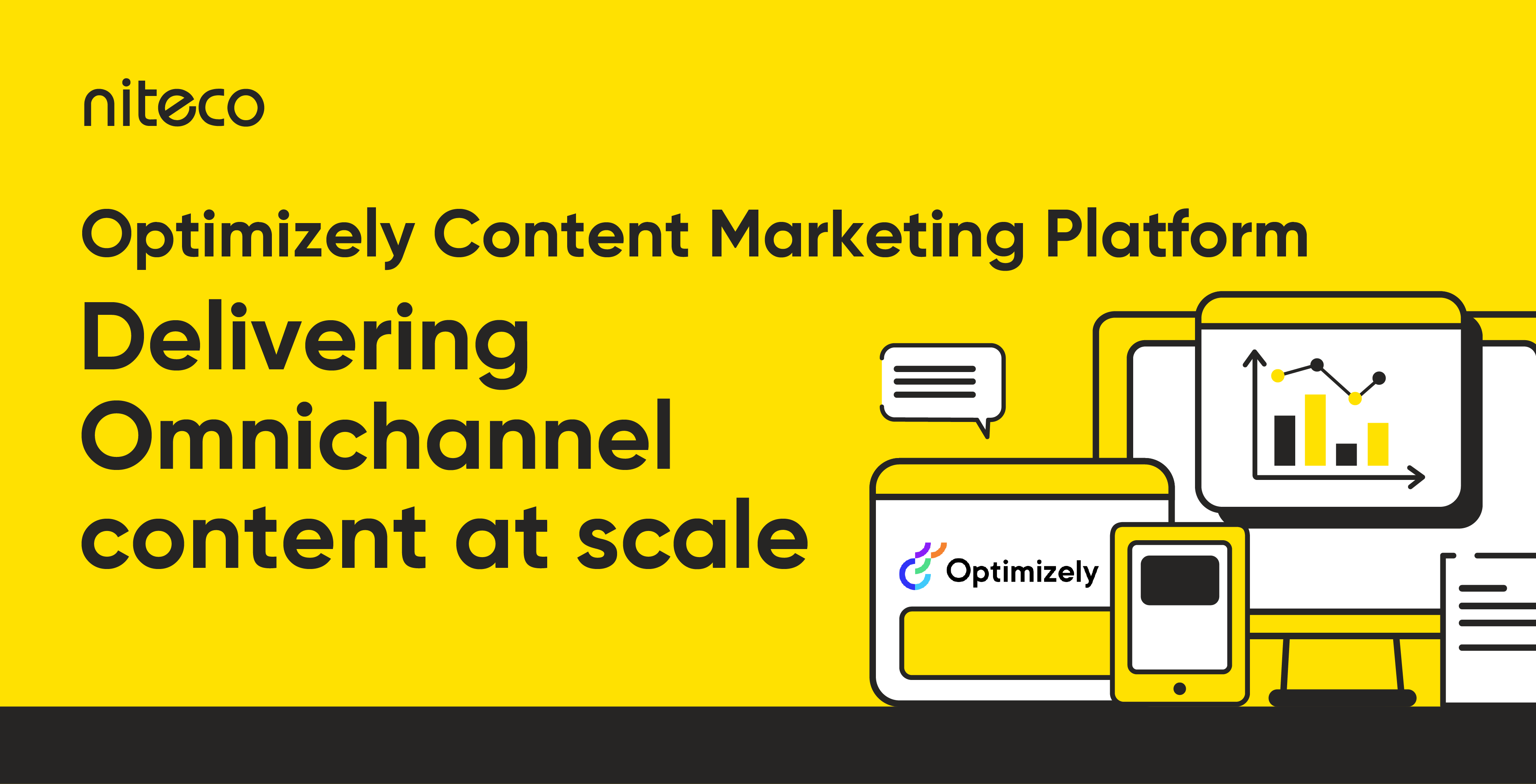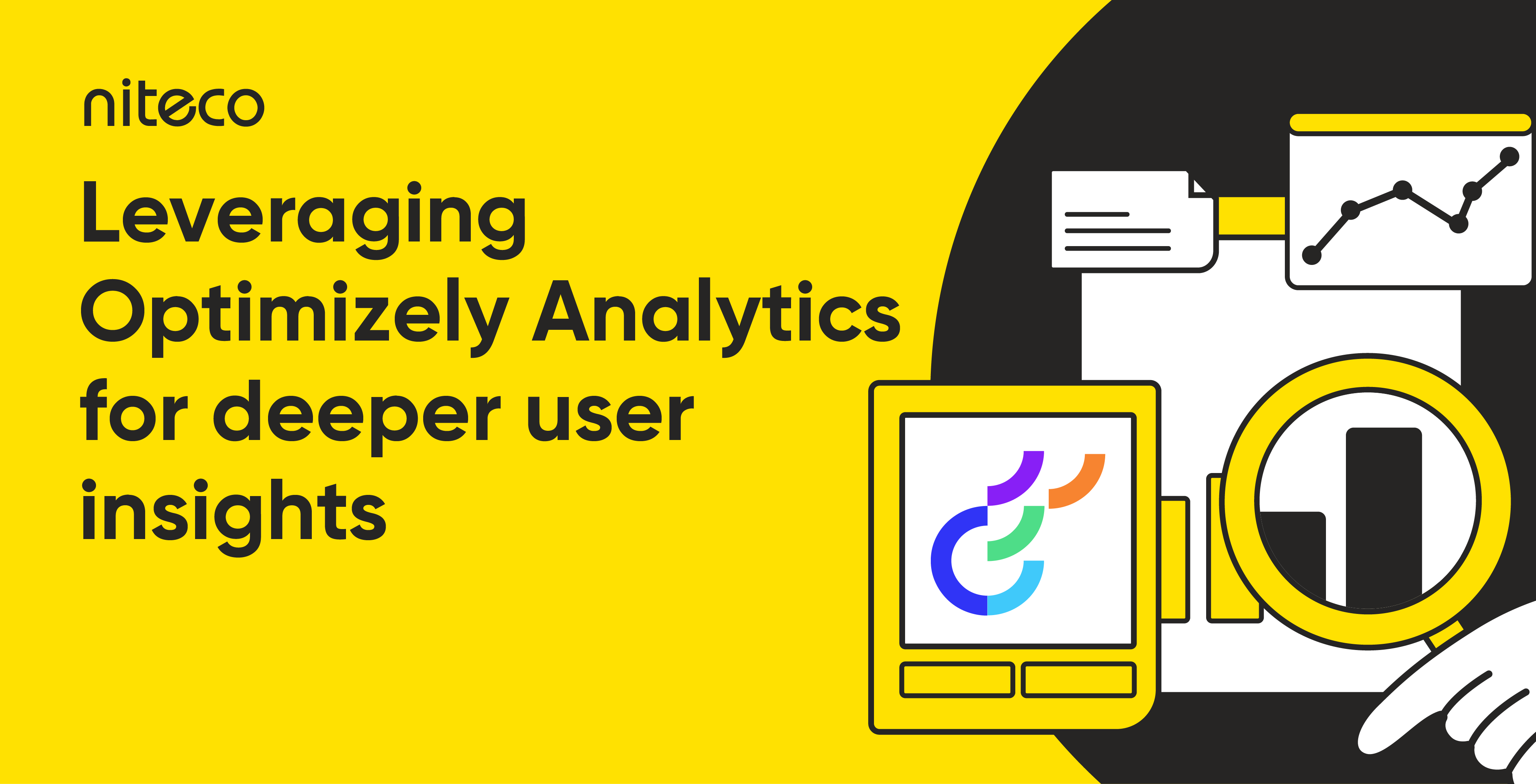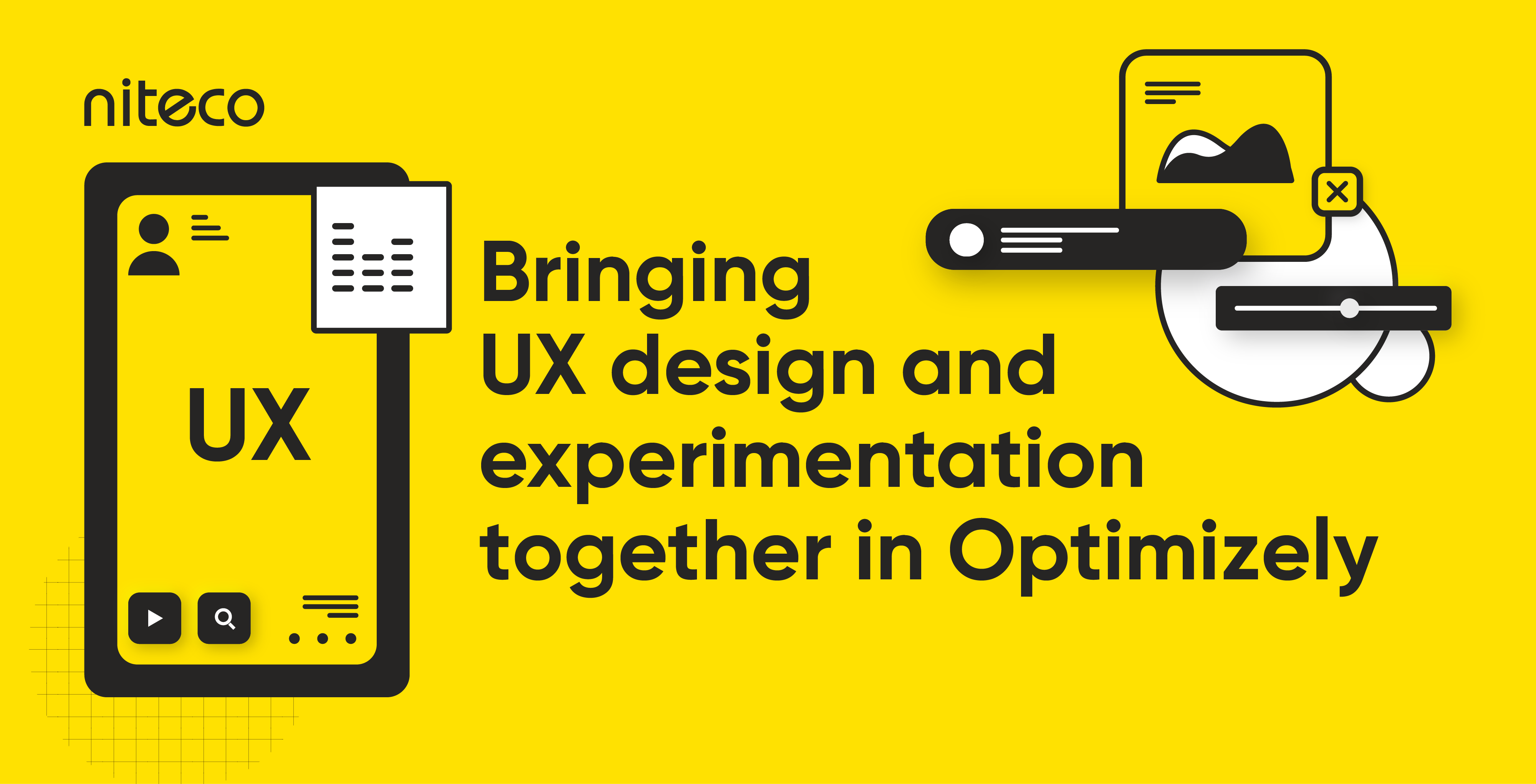“Just winging it” doesn’t cut it in digital marketing anymore. If you’re not testing, you’re guessing. And in a world where every click counts, guesswork gets expensive fast. That’s why leading brands are turning to Optimizely A/B testing to eliminate guesswork and make more informed and data-driven choices. Empowered by Optimizely AI (Opal), Optimizely A/B testing elevates experimentation to a new level, delivering even more significant ROI through intelligent automation and deeper insights.
This article explores how Optimizely’s robust testing capabilities help you make confident moves that improve ROI: key features, best practices, and how the right experimentation strategy can lead to long-term marketing success. Dive in to learn more insights from Minh Ta, Niteco’s Digital Experience Lead aka certified Optimizely Experimentation Strategist who helped Niteco achieve 38%-win rates on experimentation.
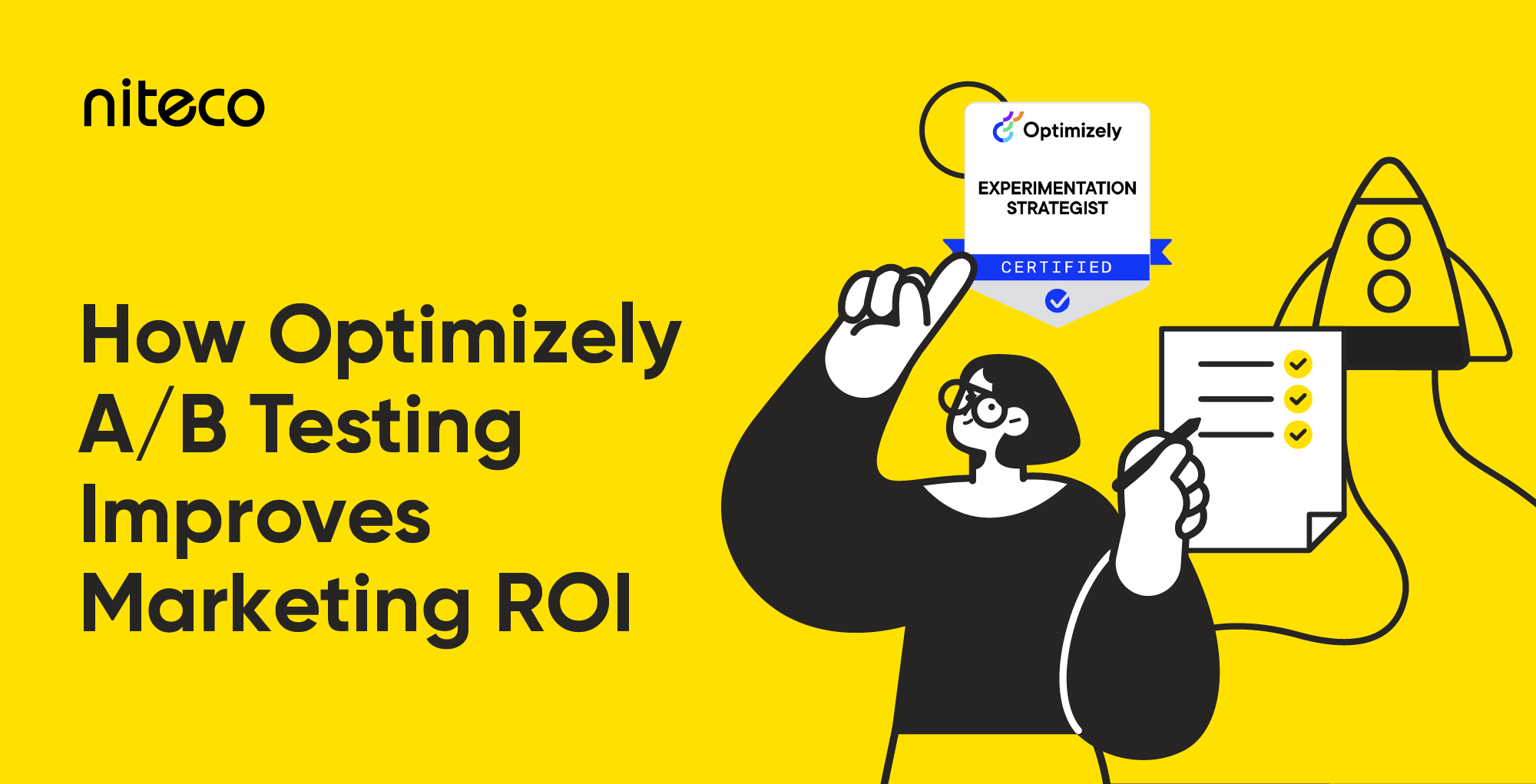
Understanding the power of A/B testing
A/B testing has become a cornerstone of effective digital marketing - and for good reason. At its core, A/B testing allows you to compare two versions of a webpage, email, or ad to see which one performs better. But beyond surface-level comparisons, it’s a powerful strategy to make data-backed decisions that drive real business impact.
When done right, A/B testing directly supports your goal to improve marketing ROI. Instead of relying on assumptions or outdated strategies, you’re continuously learning what resonates with your audience - whether it’s a headline, a layout, or a call to action. Over time, these small, strategic changes compound, leading to significant performance gains across campaigns.
With Optimizely A/B testing, marketers get more than just basic test results. You gain access to a full experimentation platform built for precision and scalability. That means better targeting, faster insights, and more confident decisions - all of which work together to increase ROI marketing performance.
To understand how to get the most out of your tests, check out our guide to A/B testing and best practices.
Key Optimizely A/B testing features for maximizing ROI
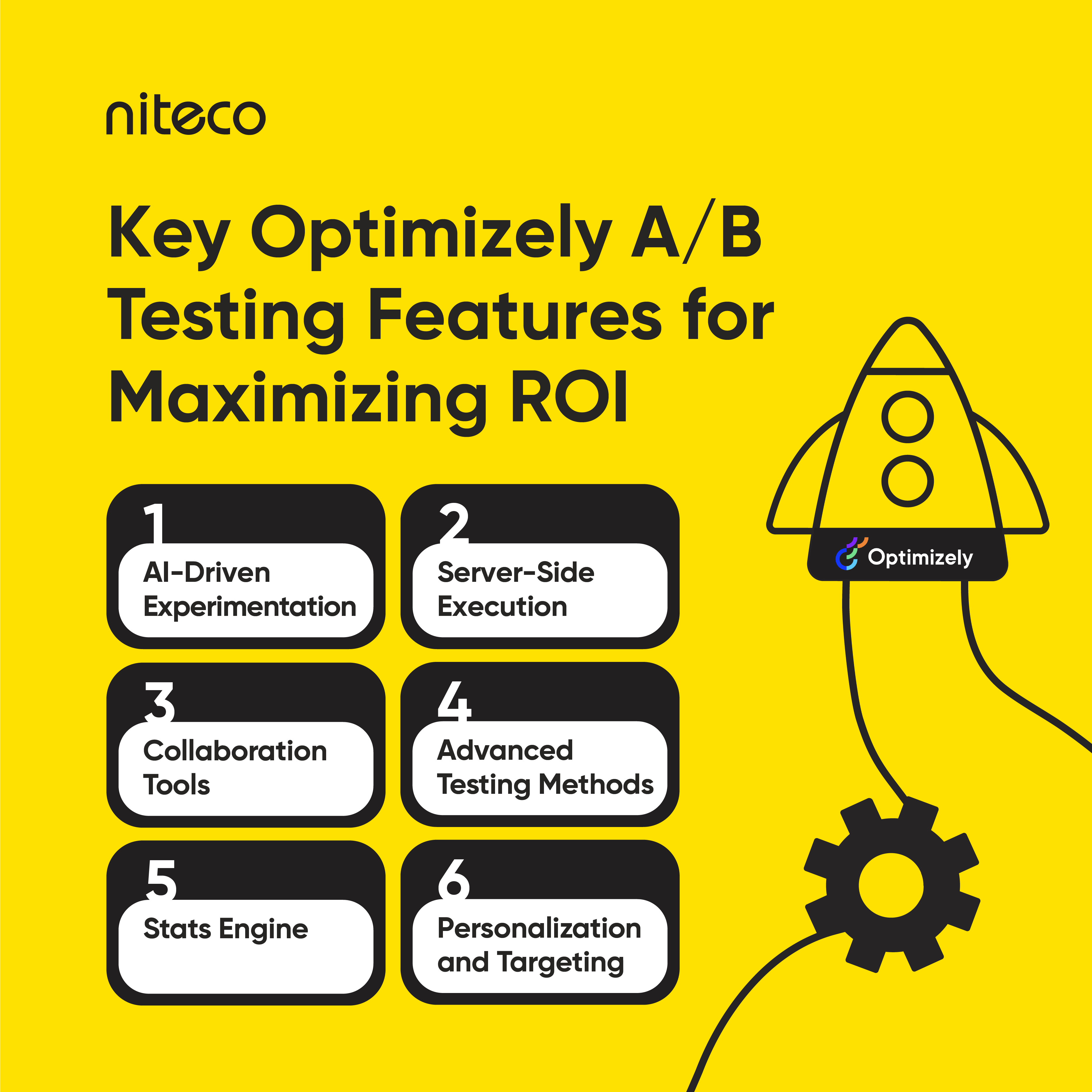
AI-driven experimentation
This is where Optimizely truly sets itself apart, moving beyond traditional A/B testing to intelligent, automated experimentation. Optimizely’s AI-driven experimentation suite, including features like AI Variation Summary and AI-driven test ideas, leverages artificial intelligence to streamline the experimentation process.
By integrating machine learning directly into the platform, Optimizely AI empowers marketers to:
- Generate test variations instantly: AI can automatically suggest and even create new variations for A/B tests, based on best practices and historical data, significantly reducing the manual effort and time typically involved in test setup.
- Intelligent traffic allocation: Instead of waiting for a test to conclude, Optimizely AI can dynamically shift traffic towards winning variations sooner, optimizing conversion rates even during the experimentation phase. This means your best-performing content gets seen by more users, faster.
- Automated insights with AI variation summary: Features like the AI Variation Summary, part of Optimizely Web Experimentation, automatically explain why certain variations outperform others. This powerful capability reduces the need for manual analysis, making advanced analytics accessible for teams, even to those who are not technical experts. It provides clear, actionable insights into user behavior and preferences, allowing for faster decision-making and continuous improvement.
- Predictive insights: Optimizely AI also helps in predicting potential outcomes, guiding you to focus on experiments with the highest likelihood of success, thereby maximizing your return on testing investment.
Building on this foundation, Niteco has extended Optimizely’s AI-driven experimentation capabilities even further. Our Opal Tools Hackathon-winning innovation, the Sample Size Genie, takes Opal AI to the next level by eliminating one of the most time-consuming parts of experimentation: planning.
With direct integration into GA4, Sample Size Genie empowers experimentation strategists to plan experiments in minutes rather than days. It automatically calculates the required sample size, baseline conversion rate, and test duration with just a few simple prompts inside Opal, making the entire planning process faster and more reliable.

Want to harness the power of AI for your experimentation and digital growth? Explore Niteco's AI services and solutions today!
Server-side execution
For high-traffic websites, maintaining speed during testing is critical. Optimizely’s server-side experimentation eliminates page flicker and reduces latency by running tests directly on the server. This ensures a seamless user experience even as you scale.
For instance, a global Commerce site can roll out and validate new features without compromising performance. Backed by a global CDN and Edge Delivery, the platform guarantees lightning-fast load times and smooth execution - no flicker, no frustration.
Collaboration tools
Did you know that Optimizely provides an all-in-one marketing ecosystem? If yes, you’re going to be surprised with what’s next. Optimizely A/B testing is also a full cycle tool by itself, whether brainstorming, designing, or tracking experiments, you can do it within the tool. No need for third-party support, with features like idea backlogs, customizable workflows, and shareable calendars.
This set of features facilitates seamless collaboration across different teams, such as marketing, product, and development, making it easier to sustain a robust experimentation program.
Advanced testing methods
Another cutting-edge feature from Optimizely experimentation that you definitely find handy is its advanced testing methods. The feature supports a variety of testing methodologies, including A/B testing, multivariate testing, and multi-armed bandits.
These advanced methods give businesses the flexibility to tackle complex optimization challenges, making it suitable for both simple and sophisticated experiments. As a result, businesses can uncover nuanced user behavior and preferences, making more conversion-driven decisions (like IBM saw a 30% increase in conversions).
With Optimizely, we successfully ran experiments for Electrolux, one of the top home appliance suppliers, helping them achieve a 385% increase in conversion rate in 2 years for some markets, 11x ROI. Read on to know more about our approach on the project and CRO.
Stats engine
Experiments are only as good as the data behind them. Optimizely’s Stats Engine ensures your results are statistically sound and trustworthy. By counting conversions based on unique visitors and offering high-confidence intervals, it delivers faster, more accurate insights - so you can act with confidence.
This minimizes false positives or negatives and supports smarter, data-backed decision - crucial when even minor improvements can drive major impact.
Personalization and targeting
Last but not least, “one size fits all” is no longer suitable in this marketing landscape, especially when customers are requesting more understanding from businesses. That’s why you can’t overlook this personalization and targeting feature from Optimizely. This feature enables hyper-personalized experiences through granular audience targeting, real-time segmentation, and integration with customer data platforms (CDPs).
How is it helping your experiments? It aligns experiments with customer data, allowing for precise targeting and tailoring to audience cohorts in real-time. As such, you can facilitate relevant interactions, directly impacting customer satisfaction and loyalty.

Best practices for running A/B tests in Optimizely
Running A/B tests in Optimizely can significantly enhance your website’s performance when done thoughtfully. From the experience running hundreds of tests in all forms for 30+ websites (client with roughly $50m yearly revenue included), I would like to share the surviving tips for running A/B tests using this platform.
Accurate data first
The process begins with collecting data to identify high-impact areas. Use analytics tools like Google Analytics 4 and heatmaps to spot pages with high drop-off rates, such as a checkout page where 60% of users abandon their carts. This data shows where testing can yield the most value.
Set clear goals by defining specific, measurable metrics
Don't estimate, be specific. For example, aim to increase conversion rates by 15% or reduce cart abandonment by 20%. Make sure to have these metrics set up correctly on Optimizely Experimentation platform. Establishing these targets upfront ensures your test has a focused purpose.
From there, create a hypothesis grounded in user research, behavior analysis, feedback, or competitive benchmarks. A hypothesis like “Reducing form fields from 10 to 5 will increase completion rate by 15% due to lower user friction” provides direction and prioritizes tests by potential impact.
Isolate variables for clear insights
When designing variations, isolate a single variable - such as a headline, button color, or checkout flow - to maintain clarity in cause-and-effect relationships. Ensure proper tracking within Optimizely to capture accurate data and test the technical setup to avoid errors. A small oversight here can ruin an otherwise solid experiment - been there, done that.

Measure, learn, repeat
It’s our CRO approach, a data-driven loop. Analyzing results involves checking statistical significance across all metrics, not just the primary goal, to uncover unexpected insights. Optimizely’s Stats Engine can help measure significance in dynamic environments, ensuring reliable conclusions.
Document all learnings, as even negative or neutral results guide future strategies. For instance, a test showing a 360-degree product view didn’t boost sales indicates user indifference, saving resources on similar features.
Common mistakes to avoid
Experimentation isn’t always a walk in the park - it’s more like a hike with a few hidden pitfalls. Here are some common mistakes to avoid - ones I’ve stumbled into, so you don’t have to.
| Mistake | Description | How to avoid | Example/Impact |
| Testing too many variables | Changing multiple elements obscures what drove results. | Test one variable per experiment, e.g., button text or layout, not both. | Testing checkout flow and button color together makes it unclear which change increased conversions. |
| Insufficient sample size/short duration | Small samples or early test endings produce skewed data. | Use sample size calculators and run tests for 1-2 weeks based on traffic. | A test stopped after 3 days with 100 users may falsely show a winner. |
| Ignoring customer journey | Testing low-impact pages doesn’t drive conversions. | Focus on high-conversion pages like product or checkout pages. | Testing “About Us” vs. checkout page misses revenue opportunities. |
| No analytics integration | Lack of integration causes troubleshooting issues or broken tests. | Ensure Optimizely connects with analytics tools for accurate tracking. | Missing integration led to untracked user segments, skewing results. |
| Drawing conclusions from ongoing tests | Acting on incomplete data risks false positives. | Wait for test completion; use Stats Engine for dynamic significance. | Mid-test changes based on early data reversed after full results showed no impact. |
Conclusion
Optimizely's powerful A/B testing and experimentation features help businesses improve ROI by making data-driven decisions. With tools like AI-driven insights, server-side execution, and personalized targeting, continuous testing ensures ongoing optimization for better performance and higher conversions.
At Niteco, we’ve seen firsthand the power of Optimizely’s platform in delivering significant business growth. As the largest certified Optimizely Partner, we provide expert consultation and support to help you unlock the full potential of A/B testing and experimentation. We don't just adopt AI – we innovate with it. Our award-winning tool, Sample Size Genie, built on Optimizely Opal AI, is a testament to our commitment to cutting-edge experimentation, proving our work and helping clients achieve more statistically sound results faster.
Whether you’re just starting or looking to elevate your current optimization strategy, our team can guide you through every step to ensure success.
Ready to take your marketing efforts to the next level? Contact Niteco today to schedule a consultation, and let’s explore how we can help you achieve exceptional ROI with Optimizely.
FAQs
A/B testing is crucial because it eliminates guesswork in marketing decisions. By scientifically comparing different versions of web pages, emails, or ads, businesses can identify what truly resonates with their audience, leading to improved conversion rates, reduced customer acquisition costs, and higher revenue. It ensures that every marketing change is backed by data, not just assumptions.
Optimizely ensures reliable results through its robust Stats Engine. This engine employs advanced statistical methods to accurately calculate confidence intervals and minimize the risk of false positives or negatives. It counts conversions based on unique visitors and provides trustworthy data, allowing marketers to make confident, data-backed decisions that drive real impact.
Optimizely AI transforms A/B testing by automating various aspects of the experimentation process. It can generate test variations, dynamically allocate traffic to winning experiences, and provide AI Variation Summaries that explain why certain variations performed better. This leads to faster insights, more sophisticated tests, and ultimately, a higher return on investment by optimizing for success in real-time.
to transform your business and drive results?

